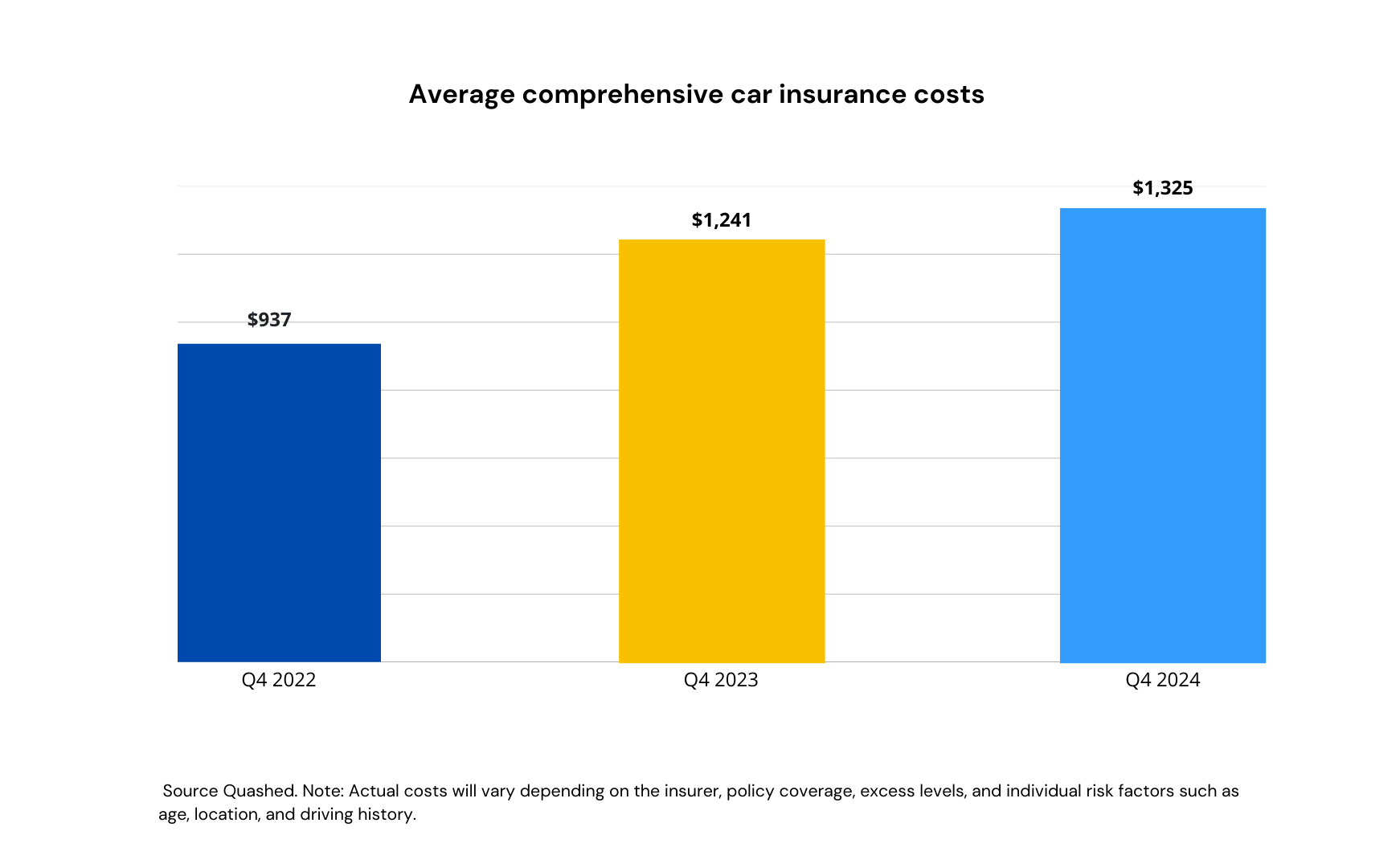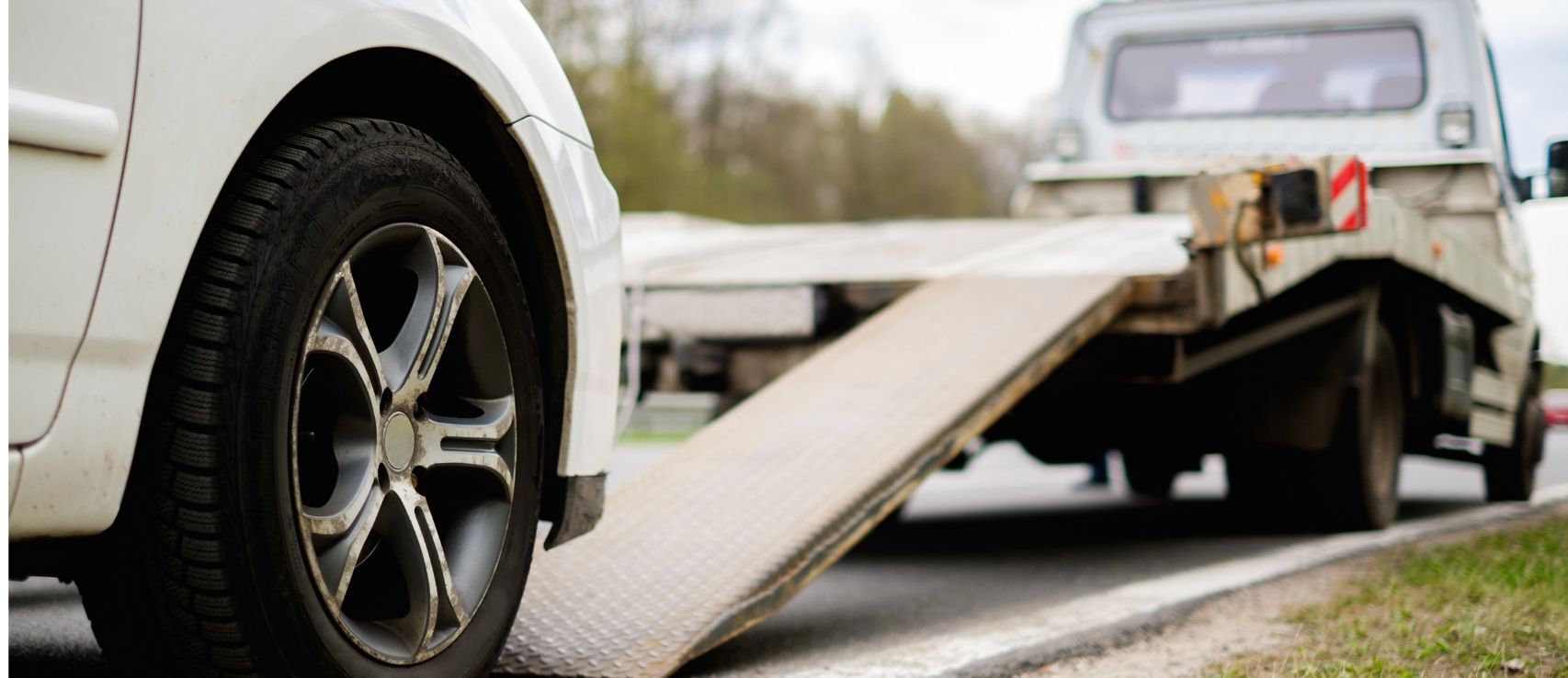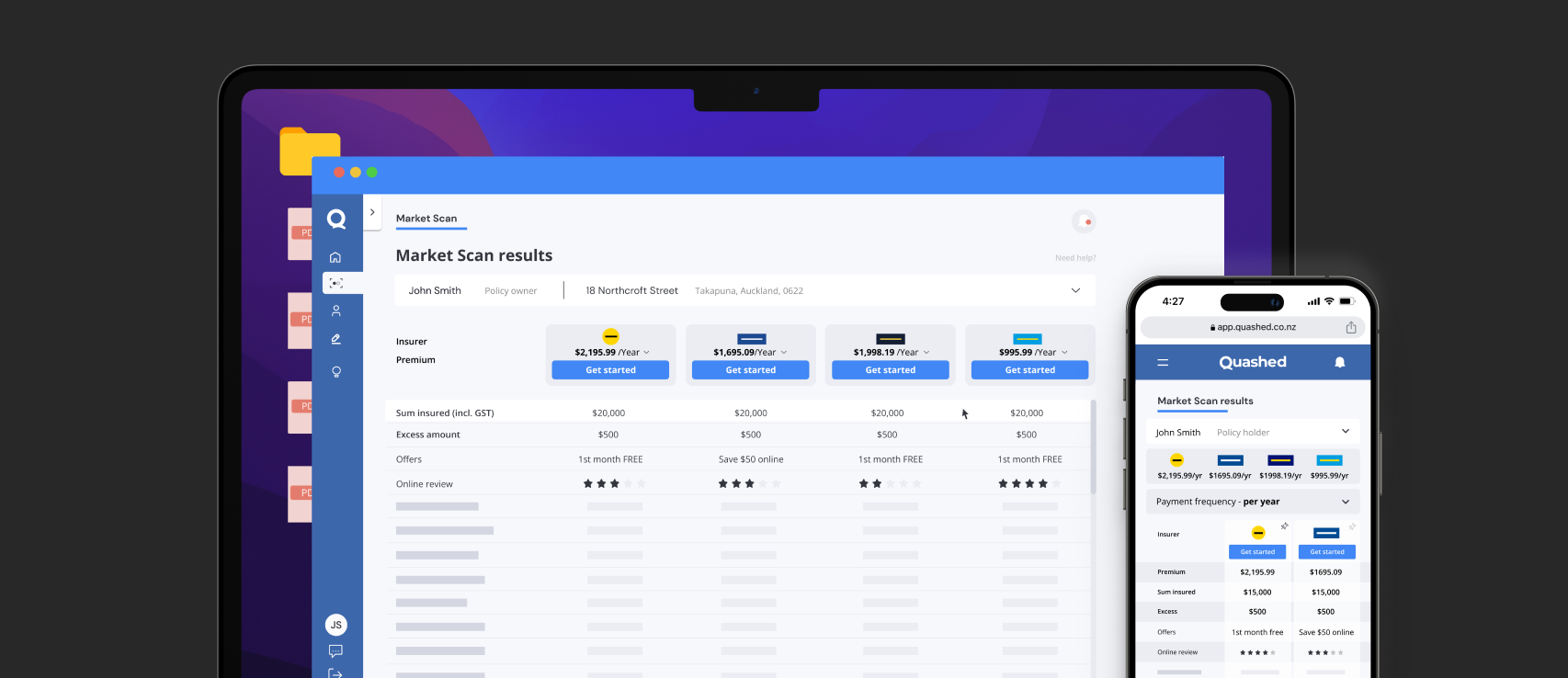
Comparing car insurance regularly is a smart move for NZ car owners.
Like any shopping you do, it can save you money and find you the right products for you. It's worth noting that insurance providers regularly update their pricing and offerings, meaning the best deal for you last year might not be the best for you now.
Read on to learn more about why you should compare car insurance, how to compare car insurance and how much you could save by comparing your car insurance.
Quashed makes comparing multiple car insurance quotes and policy benefits quick and easy, ensuring you’re not missing out on better coverage or significant savings.
Three reasons why you should compare your car insurance

First, you could save a significant amount of money.
We’re talking potentially hundreds of dollars each year – simply by shopping around. Insurance premiums can vary a lot between providers for the same type of cover (e.g. comprehensive car insurance), and many Kiwis are unknowingly paying more than they have to by just sticking with their current insurer.
Second, beyond the obvious money savings, comparing your car insurance helps you to find policies better suited to your needs. No, car insurance policies are not all the same.
Some may offer you cover if your car keys are lost or stolen, others not. Some may offer cover for incorrect fueling of your vehicle (e.g. that time your teen driver pumped petrol into your diesel vehicle), others not. Or perhaps, you’re looking for excess-free windscreen cover. Some may offer that as part of their standard policy whereas others will charge you for it. Not all policies are the same when you look at them closely.
Third, insurance companies are constantly changing their pricing and policy benefits.
An insurer offering you the best price and benefits last year could well be one of the most expensive ones in the market this year. Insurance providers regularly update their pricing, offerings and introduce new features to stay competitive. What’s more, your own circumstances change over time – the policy that was perfect three years ago might not be the best fit now that you’ve moved house, changed vehicles, or added a young driver to your household.
Now that we’ve covered the “why”, you’re probably thinking it’s still too much of a chore to compare my insurance… If you read no more of this article, read this – Quashed.co.nz makes it quick and easy to shop multiple quotes and compare policy benefits in less than 5 minutes. Find out how much you can save today.

How much does car insurance premium cost in NZ
Car insurance premiums is up 40% in New Zealand over the past three years (Q4 2022 to Q4 2024).
The average cost of comprehensive car insurance in NZ is now $1,325 a year (based on Q4 2024 Quashed data). This is up more than 40% compared to 2022 (Q4) when the average car insurance policy cost $937.
| Average Comprehensive car insurance premiums (yearly) | Average Third Party car insurance premiums (yearly) |
2022 | $937 | $302 |
2023 | $1,241 | $462 |
2024 | $1,325 | $476 |

Depending on where you live in NZ, your car insurance premiums can be world’s apart. Here’s a look at the key regions across NZ and how car insurance premiums vary based on Q4, 2024 data from Quashed.
Region | Comprehensive car insurance premiums (yearly) |
Auckland | $1,600 |
Canterbury | $1,230 |
Wellington | $1,155 |

Factors that impact the cost of car insurance
The cost of car insurance is impacted by a number of factors including:
Age
Licence type
Years of driving experience
Driving/accident history
Address
Where the car is parked overnight
Distance your vehicle is driven each year
Other selection factors that will change your premiums:
Coverage type (comprehensive vs third party policies)
Sum insured amount
Excess
Add-ons selected
Payment frequency
Now that you’re aware that the cost of car insurance has risen significantly and there are a number of factors that impact on your premiums, let’s take a look at how you should compare your car insurance to help you save money and find the best policy for you.
How to compare car insurance in NZ

There are three areas you’d want to compare when it comes to your car insurance.
Price (how much will it cost you)
Policy benefits (what can you claim on)
Insurance provider (who is providing your policy)
1. Price is the obvious one. We can only buy what we can afford. You may be surprised to learn that car insurance prices can vary a lot across insurance providers.
For example, comprehensive car insurance for a 2020 Toyota Corolla driven by a 30 year old male driver in Auckland with no accident can cost between $960 to $1,790. This range is across five insurance providers. All other variables are the same when obtaining these quotes.
Tip: Car insurance premiums can be significantly different across insurers. More expensive doesn’t mean you’re getting better cover. Cheaper car insurance doesn’t mean it’s not as good.
2. Policy benefits are next on the list to look out for. Now that you’ve got an idea of a range of prices (commonly known as insurance premiums) across a number of insurance companies, you’d want to compare and understand how the policies are different. What can you claim on each policy and how the benefits and limits are different.
A good starting point is what is the sum insured limit on your policy. One insurer may be willing to cover your car for $20,000. Another may only be willing to cover it for up to $17,000. At this point, it’ll be worth checking to see what the market value of your car is and whether at $17,000, you’d be able to buy a similar replacement in the event your car is a write-off.
Now looking at the benefits of the policy i.e. what can you claim on. There are a number of benefits that are provided with a comprehensive car insurance policy. Replacement of lost or stolen car keys, trailer cover, child car seats, towing and transportation costs, incorrect fuel, roadside assistance, death cover, and more. Not all insurers will offer the same benefits nor the same limits.
For example, Cove insurance may offer a policy that covers you if your car keys were stolen or lost. Another may not, such as Trade Me insurance. Another insurer may offer you excess-free cover up to $1,000 on your keys if they are stolen or lost. Another may only offer you up to $500 and you may have to pay an excess on it.�
When it comes time to claim, the difference in policy benefits could mean hundreds, or sometimes, thousands of dollars in difference.
Tip: The most commonly known insurance brands may not always have the most comprehensive policy benefits and limits.
3. Last, but certainly not least, the insurance provider behind your policy.
Most Kiwis will be familiar with three, maybe four, car insurance brands in NZ. AA, AMI, State and Tower are the most commonly known brands. However, you may be surprised to know that there are more than 20 car insurance providers/brands in the NZ market. AMP, Assurant, Cove, Provident and Star Insure to name a few. There are of course also the banks that offer car insurance. ANZ, ASB, BNZ and Westpac to name the big fours.
But, does bigger brands always mean better insurance and lower prices?
Some of the lesser known brands offer sharp pricing, strong policy benefits and great service. And if you’re wondering, are they any riskier to insure with compared to the better known brand insurers? One way to look at it would be the financial ratings of the lesser known brand insurers. In New Zealand, all insurers are equally held to a similar standard by the Reserve Bank of New Zealand (RBNZ) and are subjected to the same regulations enforced by the Financial Markets Authority when operating in the country.

How much can you save comparing your insurance
With comprehensive car insurance climbing 40% in three years (Q4 2022 to Q4 2024), the short answer is you could potentially be saving a lot of money.
On average, based on data from Quashed.co.nz, a NZ consumer shopping for their car insurance can expect to find that prices will vary between 30% to 50% across insurers. From Quashed’s 2024 data, we find that Kiwis could save $460 on average when it comes to car insurance.
Based on this, in a household with three cars, savings could be more than $1,000 a year. Over 10 years, assuming this holds constant, the car owner with three cars would be saving in excess of $10,000.
Does that mean you’ll save the $460 on your car insurance today? It depends. You could save more, less or none at all. The best way to find out is to compare and shop for your car insurance across 4-5 car insurance providers.
To compare your car insurance in minutes, try Quashed.co.nz
How does Quashed.co.nz compare car insurance

Quashed.co.nz is the first insurance comparison platform of its kind in New Zealand.
It's quick and easy way to compare your car insurance. Whether you’re shopping for a new car policy, or you’re looking to compare your upcoming car insurance renewal, Quashed makes it easy.
It takes less than five minutes to shop and compare car insurance online with Quashed. You’ll be shown real-time pricing across a number of different insurance providers, and you get to see how the policy benefits compare across each insurer shown.
You can choose to upload and compare your existing car insurance policy against other options, or you can enter your information once and be served up a number of options without having to repeatedly enter the same information on the different insurers websites.
Let’s face it, no one likes shopping for insurance. But Quashed.co.nz makes it quick and easy, some might even say almost fun. Especially when you’re saving hundreds, sometimes thousands, of dollars.
Further reading
Here are some great reads we've selected for you:
Comparing Insurance Costs for Cars: Insurance cost differences across the most popular vehicles in NZ
Cheapest vs Best Car Insurance: Striking the balance between price and protection with your car insurance
Car Insurance Quotes Guide: Insider tips to compare and save on insurance
Average Insurance Costs in NZ: A deep dive into what Kiwis really pay for car, house and contents insurance
Renewing Car Insurance Tips: A no-fuss guide to your next policy refresh
Tesla and Insurance: The costs of insuring a Tesla car in New Zealand
Car insurance FAQs
Why should I compare car insurance regularly
Comparing your car insurance regularly can help you to save money on your cover when you find a cheaper policy. Car insurance comparisons also helps you to understand what you can claim on within your car insurance policy. Insurers often update their pricing, which means their premiums could be cheaper or more expensive.
How can I reduce my car insurance premium cost
There are several ways to reduce your premiums:
Increase your excess – A higher excess means lower premiums, but also higher out-of-pocket costs when making a claim.
Review your sum insured – Ensure your coverage reflects the true rebuild cost without over-insuring or under-insuring.
Pay your premiums annually instead of monthly – Most insurers charge extra for monthly payments.
Compare quotes with Quashed.co.nz – Shopping your insurance ensures you’re not overpaying. Prices can vary significantly between providers.
Car insurance basics
What does car insurance cover in NZ?
Car insurance can cover damage to your car and the other involved parties' car in the event of an accident. Events such as accidents, natural disasters and unexpected events such as vandalism, theft, and more are usually covered if your car is insured comprehensively. Coverage varies by policy, but most standard comprehensive cover will:
Replace or repair your car if it was accidentally damaged, stolen or vandalised
Replace or repair your windows or windscreen if it was chipped, cracked or smashed
Liability cover if someone is injured by your car causing an accident
Natural disaster protection such as flood damage
Towing, transportation and or accommodation costs after an accident
Lost or stolen car keys
Other benefits such as trailer cover, children's car seats, rental car hire, injury and death cover
Read more here to find out how car insurance is different from Mechanical Breakdown Insurance.
Getting car insurance cover right
How do I know if I’m insuring my car for the right amount?
Your sum insured should reflect the cost of replacing your car if it was completely written off. If it’s set too low, you may have to cover the shortfall in a claim. Over-insuring can cost you more. You can check out Trade Me to understand how much it will cost to buy a similar car.
What should I check when comparing car insurance policies?
Key factors to compare:
The insurer - Who is the insurer (e.g. their financial rating, where they are based, etc.)
Sum insured – Does the policy fully cover rebuild costs or only the amount you've elected
Policy benefits and limits - What does your insurance cover and how much can you claim
Excess options – A higher excess lowers premiums but increases claim costs.
Policy exclusions – Check what’s not covered, such as gradual wear and tear.
Claims process – Consider customer reviews and insurer reputation.
Additional cover options – Some policies include extras like excess-free cover options
Making a car insurance claim
What’s the first thing I should do when making a claim?
If you're in an accident, you should check that all parties involve are not hurt. Call for an ambulance immediately if injuries are serious. The police should also be notified.
After which, you should take immediate action to document the damage and notify your insurer.
General car insurance claims process:
Most, if not all, insurers will require that you do not admit fault.
Photograph and video the damage for evidence.
Take down the other parties' details (photo of driver licence, REGO, contact details).
Contact your insurer as soon as possible to start the claim.
Prevent further damage if safe to do so, such as covering broken windows.
Keep receipts for emergency repairs or replacements.
Follow your insurer’s process to avoid claim delays.
What happens if I am underinsured for my car insurance
Underinsurance occurs when your sum insured isn’t enough to cover the full cost of repair or replacement cost of your car. If this happens, you may have to contribute to the shortfall.
This article provides general information only and does not constitute insurance or financial advice. Insurance policies vary between providers, and you should check with your insurer or a licensed adviser for guidance specific to your situation. For full details, refer to Quashed’s terms and conditions.

